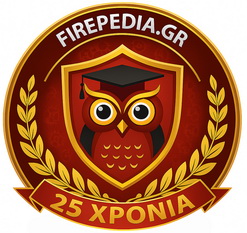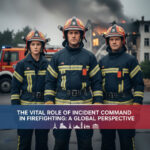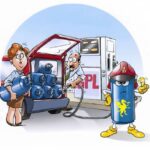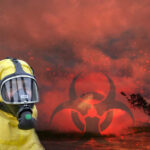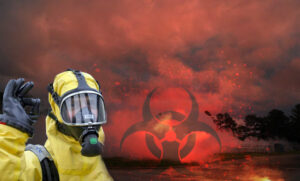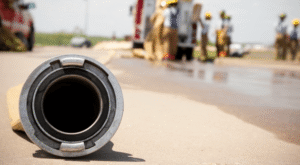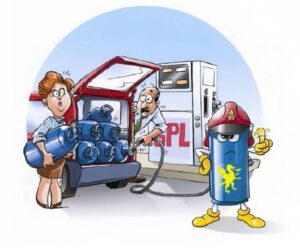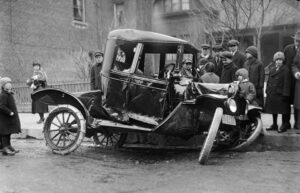
The evacuation of a hospital requires special consideration based on the premise that persons residing or visiting hospitals (other than abled bodied staff and visitors) might not be readily mobile and are likely to have some sort of ailment that requires hospital care and/or attention. Furthermore, patients in hospitals might be bed-ridden, or undergoing a surgical procedure (under local or general anaesthetic), or an examination (MRI scan), they might have temporary or permanent mobility, visual or other impairment that requires assistance in the event of an evacuation, or they might be kept on life support and/or other complex machinery that is vital to their health.
In any case, the complexities faced in hospitals due to the variety in the characteristics of occupants, as well as the work taking place[1] in these buildings, gives them a higher risk profile when considering the requirements of emergency procedures. As such, conventional methods for the evacuation of occupants in the event of a fire or fire alarm activation would not be appropriate for hospital buildings. The above measures could equally apply to residential care homes, where characteristics of occupants would necessitate assisted evacuation.
The evacuation strategy required for hospitals is called ‘progressive horizontal evacuation’ and the philosophy behind this strategy is to be able to move people into places of relative safety via the method of horizontal movement through different fire compartments with adequate fire separation between areas. This is necessary where vertical evacuation is not an immediate option due to the characteristics of the occupants (embedded patients, patients under treatment) and where horizontal movement can be more easily facilitated and, under the protection of passive fire protection, temporarily hold people whilst further action is decided.
As stated in BS 5839-1 (2013: 45), patients can be moved horizontally to adjacent compartments to the fire affected compartment, and in large hospitals, it may be the case, that patients can keep moving horizontally if the situation worsens without vertical escape being necessary. In smaller premises, it may be decided that vertical evacuation is appropriate following the initial phase of horizontal movement, and this could be achieved by specialist evacuation lifts[2].
A staged alarm system is required to facilitate ‘progressive horizontal evacuation’. The alarm can either be in two stages or three stages. A two stage alarm would have the capability of sounding an ‘Alert’ alarm with the scope of preparing people in areas adjacent to the area involved in fire. This could be in the form of an intermittent alarm (electronic or bell), or, a voice alarm with a pre-recorded message. It will also have the capability of sounding an ‘Evacuate’ alarm in areas that might immediately be (or become) affected by fire. This alarm should initiate the evacuation procedure for the affected area.

A three staged alarm would have exactly the same settings with regard to the ‘Alert’ and ‘Evacuate’ settings, but will also incorporate a staff alarm to designated trained staff who will be allowed a given time slot to investigate before an ‘Evacuate’ alarm is sounded in the affected area. This alarm system will effectively accommodate a phased strategy, in the form of progressive horizontal evacuation, meaning that not all areas will evacuate simultaneously.
The areas that might be directly affected by fire will horizontally evacuate into an adjacent compartment under a full alarm; areas adjacent to these will sound an ‘Alert’ (or prepare) signal, and other areas might not be affected by this situation if it is deemed a ‘non-emergency’, or will also evacuate in phases at a later stage.
Fire alarm and detection systems serve the purpose of providing early warning to staff and other occupants, and the initiation of the evacuation procedure in a timely manner. Early detection of fire will also lead to any fire being dealt with faster, therefore, limiting the potential damage or harm that might be caused. Passive fire protection, however, is essential to this strategy.
HTM 05-02 (2015) describes the design features essential to achieve adequate compartmentation between areas in order to accommodate horizontal evacuation. These are dependent on storey floor size and storey height above ground level. In general, compartments need to achieve a minimum 60min fire resistance between areas, though this may be reduced to 30min where sprinklers are fitted. Sub-compartments, leading into compartments, need to have a minimum 30min fire resistance between sub-compartments.
Each compartment should be capable of hosting the maximum number of the most highly occupied adjacent compartment, including its normal occupant capacity and any ancillary machinery. Corridors and circulations routes need to meet fire resisting standards equal to those of the compartment and be of adequate width to be able to manoeuvre embedded patients including any complex equipment/machinery[3].
In more detail, in a hospital building of no more than 12 metres in height above ground level and no storey larger than 1000 m², every floor with patient access should contain no more than 30 patients and be divided into a minimum of two compartments. If the compartment also provides sleeping accommodation, then no more than 20 beds should be provided. In buildings of no more than 12 metres above ground level but with floors larger than 1000 m², floors should be divided into a minimum of 3 compartments and may use a hospital street as one of the compartments[4].
Hospital streets are a special type of compartment that connect final exits, stairways and lead to department entrances. They are also the main circulation route for staff, patients and visitors. They generally serve two purposes, one of which would be to act as a separate compartment and an evacuation route from an adjoining space affected by fire, hence, they must have a minimum fire resistance equal to a compartment (i.e. 60min). Hospital streets also serve the purpose of providing the location for a fire-fighting bridge-head from which fire-fighting operations will commence[5].

The maximum travel distance in single direction before having a choice of escape routes is 15 metres from in-patient space and 18 metres from all other areas of healthcare buildings[6]. Respectively, the maximum travel distance from any point within a compartment should be no more than 60 metres to each of two adjoining compartments or an adjoining compartment leading to a stairway or final exit.
The maximum travel distance from any point within a sub-compartment should be no more than 30 metres to an adjoining compartment or sub-compartment leading to a stairway or final exit. It is logical that the lesser time value for sub-compartments in comparison to compartments is implemented to compensate for the lesser fire resistance present in sub-compartments.
As the major concern here, and indeed a legal requirement, is life safety, then it is understandable that these measures are in place to satisfy, as far as is reasonably practicable, this requirement. Evacuation from hospital buildings and care homes is a complicated process due to the nature and characteristics of occupants, and what makes matters even more complicated is that there is little opportunity to practice these strategies under simulated conditions. Therefore, evacuation procedures in such premises are usually highly reliant on table top exercises rather than the ‘real deal’.
As such, the reliability of, mainly, the passive fire protection measures, with the support of active controls, must be ensured in order to achieve, not only, legal compliance, but, ultimately, a positive outcome in an emergency situation.
by Kimon Pantelides, MSc, GIFireE, MIAAI
Fire Safety Officer at University College London
Notes:
- [1] This would include a number of materials that are used including compressed gases, solvents and other chemicals.
- [2] There is also scope to use accommodation lifts for evacuation purposes, but these must be in safe and separate compartments to the one affected by fire and must follow the guidance of BD 2466 – ‘Guidance on emergency use of lifts or escalators and fire and rescue service operation’ (HTM 05-02, 2015: 28).
- [3] The recommended minimum clear corridor width for circulation of beds/trolleys is 2150 mm and 2950 mm where two beds need to pass regularly (Health Building Note 00-04, 2013: 5).
- [4] HTM 05-02, (2015: 18)
- [5] HTM 05-02 (2015: 7)
- [6] HTM 05-02 (2015: 22).
